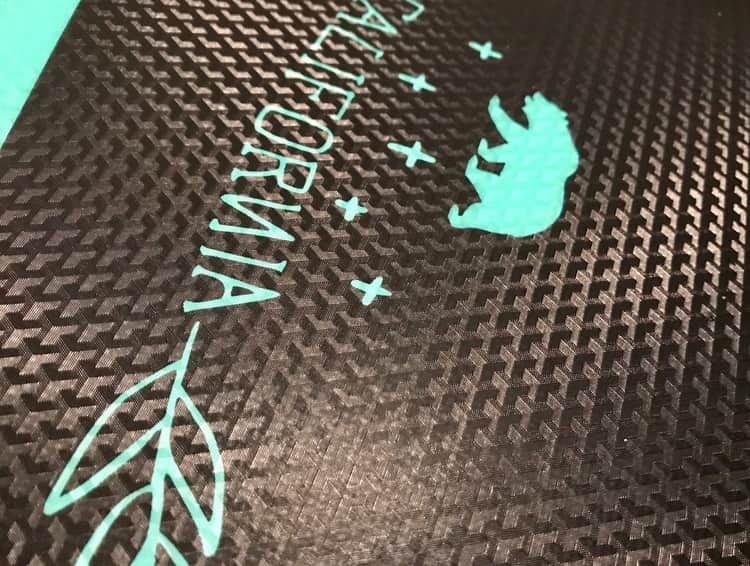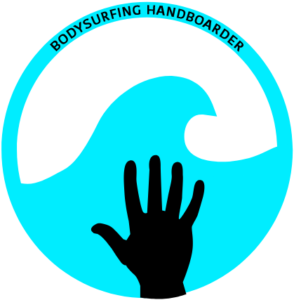As an owner of a bodysurfing
What are bodysurfing handboards made of? Typically most brands and board designs consist of one or more of the following materials:
- Epoxy resin
- Polyester resin
- Polyethylene / Polypropylene (plastic molding)
- Wood
- Foam (EPS, PU, or PS)
- fiberglass finish
- Carbon fiber
Why you need to know about board construction and what you are riding?
It is important to understand the materials used in making a
simple explanation of board materials
Bodysurfing handboards can be designed using either wood or a foam blank that is coated in a strong resin or fiberglass. This is similar to the way surfboards are designed today.
The two main types of foam used are expanded polystyrene (EPS) or urethane. To reinforce the foam strength, they are typically coated with either epoxy or polyester resin.
One of the most durable compounds is
You may also find some handplanes
Handboards may also be formed using molded plastic such as polyethylene or polypropylene. You will notice that some handboards, such as the Grom, have a slick underside similar to that of a bodyboard. This material is made of High-Density Polyethylene (HDPE).
types of foam boards
You may find one of these three types of foam in your handboard:
- Polyurethane (PU)
- Polystyrene (PS)
- Expanded Polystyrene (EPS)
Some of the more popular handboards in the industry, such as Slyde, use a foam core design for their handboard. They use a higher density foam, like expanded polystyrene (EPS), at the center of their boards.
What is EPS? Expanded polystyrene is a non-toxic, odorless foam that is very rigid and stiff. This type of foam is an upgrade from the traditional polyurethane used to make surfboards back in the day.
EPS is made by bonding small foam pellets together. This manufacturing process forms
I’m sure you have seen EPS before. The foam coolers that you can buy at your local grocery store, like the one featured below, is an example of this material.


Polyurethane is the grandfather foam of traditional surfboards. If your bodysurfing handplane uses a polyurethane center then you will notice that your ride is “softer”. It will be an entirely different riding experience compared to EPS.
Polyurethane is the cheapest foam. It is also easier to shape. However, the high toxicity of polyurethane has become frowned upon in the industry.
Polystyrene is an upgrade from using polyurethane. Encasing polystyrene in epoxy resin produces a stiffer board for a lighter, better ride. Polystyrene is also more environmentally friendly than polyurethane.
pros & cons of epoxy handboards
Epoxy resin is by far one of the strongest substances for laminating handboards. It does an excellent job of protecting your board from dings and other potential damage. This material helps to maintain the integrity of the rail and nose of your handboard.
There are many reasons to use an epoxy handboard. Below, I have listed the benefits of epoxy.
advantages of epoxy handboards:
- Extremely lightweight
- Super durable
- Environmentally friendly
- More Versatile than polyester resin
- More durable than polyester resin.
- More flexible
- Easier paddle
Epoxy is more versatile than polyester. You can’t use polyester resin on an EPS board. However, you can use epoxy resin on a polyurethane board or EPS board.
Epoxy resin It is about twice as flexible as polyester, which means less chances of cracking your board. If you get a handplane made from 100% epoxy, like a Slyde hand board, you are certainly receiving the highest quality board that will last you a very long time.
disadvantage of epoxy handboards:
The downside to epoxy boards is that they are more expensive to make. Therefore epoxy handboards come with a higher price tag.
pros & cons of poly handboards
Polyester resin is one of the most widely used substances for laminating surfboards and handboards. It is typically used to coat polyurethane foam to protect the tail, nose, and rails.
Here is a list of some benefits and drawbacks of polyester resin.
advantages of polyester resin:
- Inexpensive coating
- Easy to acquire for DIY board construction
- Maximum flexibility
Polyester is less expensive than epoxy resin. Therefore, it would make sense for companies to use this material in order to save money.
Some professional riders love the flexibility of poly boards. They feel that they are able to perform better.
disadvantages of polyester resin:
- Can get cracked easily
- Vulnerable to getting dinged
- Not a green compound
Poly boards are less durable so there is no telling how long it will last you. It would suck to invest in one of these boards to only have it fracture after a couple of year of using it. H
pros & cons of wooden handboards
Using wood material is an entirely different
Here is a list of the pros and cons of using woodies (wooden handboards).
advantages of wooden handplanes :
- Better control & maneuverability
- Easy paddling
- Very durable
- Environmentally friendly
Woodies can carve up wave faces fairly well. You will like the amount of control you have gliding across the water.
disadvantages of wooden handboards:
- Not as
bouyant - Reduced lift
- Increased drag
Wooden boards are not as light or buoyant as foam boards. This means you can experience less lift and more drag across the water’s surface. Therefore you may not be able to ride the wave as fast or as far as you could with a foam board.
After some research, I found that a wide variety of wood is used for constructing
- Bamboo
- Cork
- Paulownia
- Redwood
- Mahogany
- Oak
Many
I was surprised to find that some
what is fiberglass?
Fiberglass consists of tiny glass particles that are used to strengthen plastic material. It is durable and smooth, which makes it ideal for skimming across the water and preventing board damage.

Fiberglass will add some weight to the board but can be justified by the protective properties it provides as well as the strength reinforcement. Notice the fiberglass used on the Slyde
what is polyethylene and polypropylene?
Polyethylene and polypropylene are very versatile plastics that can be used for many different applications. These plastics are commonly used to create moldings for products such as bodysurfing handboards.
Handplanes that are made entirely from these type of plastic moldings such as the Hydro and GoFloats are typically cheaper than boards constructed with epoxy. These inexpensive boards are usually more popular with riders on a budget.
You will find high-density polyethylene (HDPE) on the bottom side of bodyboards or handboards, like the Grom from Slyde. It is a very popular molding for the underside of these boards because of its strength and durability. Plus, it is designed to be slick for a faster, longer ride!
pros & cons of carbon fiber handboards
Carbon fiber or graphite fiber consists of extremely thin carbon atoms that are bonded together with a polymer resin via heat or pressure. This is one of the new materials that
What are the benefits of a carbon fiber
- High tensile strength
- Super lightweight
- Superior performance
- Extreme stiffness
- Able to withstand
impact - Very responsive
- Increased speeds
This innovative technology delivers a whole different bodysurfing experience. You will be impressed by the amount of maneuverability, control, and acceleration. Carbon fiber boards should last you a lifetime.
What are the disadvantages of carbon fiber handboards? Here are a few reasons that may deter you from buying one:
- More expensive than regular boards
- More vulnerable to cracks instead of dings
- Hot temperatures can cause unpainted carbon to delaminate
May be more difficult to repair
Carbon fiber handboards can be difficult to make so the price of these types of boards is usually pretty high. You need to be careful about leaving your board out in the sun if you live in hot climates as this can damage the lamination.
If your carbon fiber board gets cracked or dinged, you may find it more challenging to repair than other types of boards. There are not as many resources available showing how to repair this type of board material.
opular handboards and corresponding material
To help give you an idea of the many different types of materials used to created bodysurfing handboards, check out the table below. It displays the board, brand, and materials used for the design.
| Board Model | Brand Name | Board Material |
| Slyde Wedge | Syde Handboards | urethane, epoxy resin, carbon fiber |
| Grom | Syde Handboards | HDPE, high-density foam |
| Ecto Glass | Ecto Handboards | polyurethane foam, fiberglass |
| Ecto Wood | Ecto Handboards | paulownia wood |
| Go Kart | Garage Handplanes | high-density EPS, fiberglass, epoxy resin, carbon fiber |
| Moontail Woodie | Sole Handplanes | bamboo, infused cork |
| Velo | PPP handboards | paulownia wood |
| The Classic | Salt Creek Palmboards | hard plastic, rubber |
| Multiple Designs | Ventana Surfboards | recycled wood (cedar, oak, mahogany) |
As you can see, the many boards listed above represent a wide range of materials used for manufacturing handboards. Foam and wood are very popular and will impact the performance of your board differently.
Related Questions:
foam vs wood handboards …which is better?
This depends on the type of riding experience you want and also personal preference. If you want maximum maneuverability then wood boards are excellent for carving up steep waves. However, the bula is a foam board that is equally as good.
If it is speed and distance you seek then I recommend using a foam board as they provide more buoyancy and lift which results in less drag. If you are very conscientious about preserving the environment then recycled wooden handboards leave a greener footprint.
are epoxy handboards the most buoyant?
Epoxy handboards with an EPS foam center are extremely buoyant. This type of board will provide maximum buoyancy and lift to help raise more of the body out of the water to reduce drag.
is a cheap plastic handplane worth the money?
A bodysurfing handplane made entirely of plastic will work as intended. If you are on a budget, it is worth the investment to help you catch more waves. In regards to the overall performance and longevity, investing in an epoxy foam board would be a better option.
Handboard performance is heavily reliant on planing capability and durability. Do your research to find a board that will make you float across the water faster and longer without ever getting damaged!
